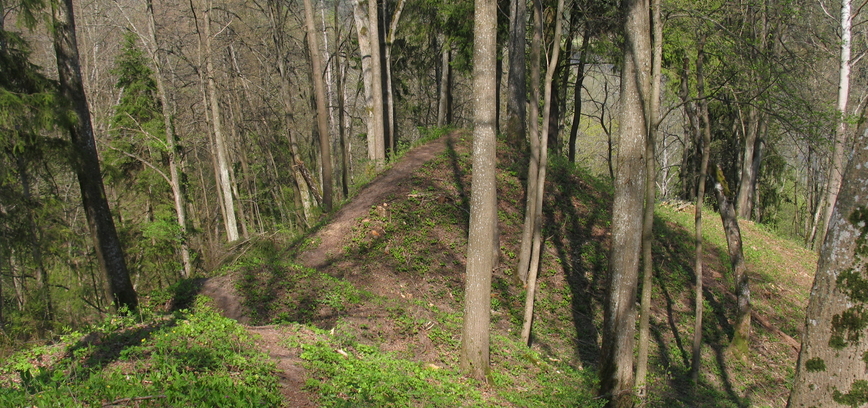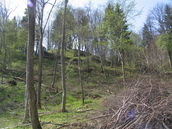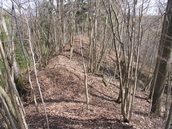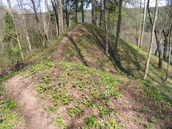Paalkiai Hillfort was erected 1000-1500 years ago at the confluence of the Neris and a nameless rivulet. A fortified castle of one of the Baltic tribe communities is believed to have been built here.
Our forefathers were smart and used the high slope of the Neris shore to build the hillfort. This way, the hillfort was protected from the enemies by the water of the river and its steep slope reaching up to 30 meters in height on one side and the steep ravine made by the nameless affluent of the Neris on the other side. As the years passed by and the tribe abandoned the fortifications, the hillfort got overgrown with a forest and its site got smaller, measuring 6 m in length and 12 m in width. Two fortifications and ravines remained at the site. In 2005, it was the remains of these fortifications that gave Ida Stankevičiūtė, an employee of the park, the idea that a hillfort could have stood here. This way, the cultural heritage of Lithuania received one more discovered object. So far, archeologists have not researched this hillfort further. However, our knowledge about Lithuanian hillforts in general is vast. We have close to a thousand hillforts! The first hillforts located in the present-day territory of Lithuania were built about 3000 years ago. At first, those were just fortified settlements. To protect their assets, the local communities would choose high grounds and would fortify them with several rows of fences, a hill and dug out ravines. As years went by, the hillforts became important defensive positions in the attacks by the Teutonic Order. Sturdy wooden castles and houses for local rulers were built. The hillfort age ended in the 15th century after the Teutonic Order was defeated in the Battle of Grunwald. Lithuania and Europe met the new age with deserted hillforts which became objects of interest as ancient heritage. We do not need to stop here as we have over a thousand hillforts to discover. The number of hillforts concentrated in Lithuania is one of the highest, if not the highest, in Europe.
Let us learn more about our unique cultural heritage and work hard to protect it.







Reviews